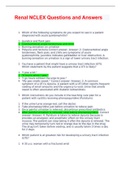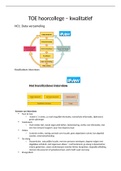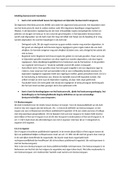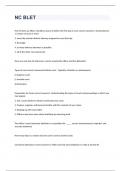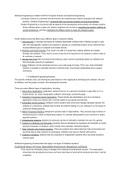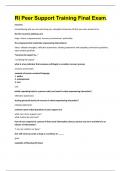Tentamen (uitwerkingen)
Renal NCLEX Questions and Answers 2021/2022
- Vak
- Instelling
Which of the following symptoms do you expect to see in a patient diagnosed with acute pyelonephritis? 1. Jaundice and flank pain 2. Costovertebral angle tenderness and chills 3. Burning sensation on urination 4. Polyuria and nocturia Correct answer- Answer: 2. Costovertebral angle tenderness...
[Meer zien]
